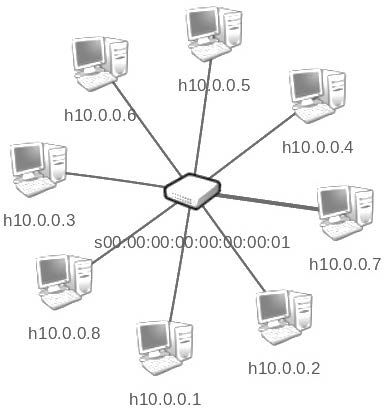Sobre las características de las Redes Definidas por Software para la provisión de calidad del servicio en redes de datos
DOI:
https://doi.org/10.17981/ingecuc.14.2.2018.10Palabras clave:
Redes Definidas por Software, SDN, Floodlight, Mininet, Packet Tracer, Calidad de servicio, Ancho de banda, Encolamiento, Tasa de transmisión, tiempo de respuestaResumen
Introducción: Las redes tradicionales implementan en su gran mayoría dispositivos donde el control es distribuido y mezclado con el plano de datos, aspecto que no permite una evolución rápida hacia un proceso que contribuya a mejorar el transporte de los servicios. Por el contrario, las Redes Definidas por Software son un conjunto de servicios de transporte que optimizan la utilización de los recursos al poseer una estructura de red centralizada.
Objetivo: Determinar los aspectos que hacen que las redes definidas por software puedan ofrecer características de calidad de servicio en redes de datos.
Metodología: Este estudio se realiza mediante simulación, sobre una misma red base y bajo las mismas condiciones de trabajo, llevando a cabo medidas del tiempo de respuesta del envío de paquetes y gestión del ancho de banda transportado. El estudio también incluye una prueba mediante la transmisión de contenido multimedia a través de una arquitectura de red definiendo prioridades a los enlaces.
Resultados: Los resultados muestran la forma en que las Redes Definidas por Software logran una mejor gestión del envío de datos a través de la red base. Del mismo modo, los resultados previos fueron respaldados con los obtenidos en la prueba de calidad de servicio para un flujo multimedia.
Conclusiones: Las redes definidas por software debido a su control centralizado habilitan el encaminamiento y provisión de calidad del servicio en redes de datos basadas en dispositivos de capa-2.
Descargas
Citas
N. Feamster, J. Rexford and E. Zegura, "The Road to SDN: An Intellectual History of Programmable Networks." ACM Sigcomm Computer Communication, vol. 44, no. 2, pp. 87–98. 2014. http://doi.org/10.1145/2602204.2602219
A. Basit, S. Qaisar, S. H. Rasool, and M. Ali, “SDN Orchestration for Next Generation Inter-Networking: A Multipath Forwarding Approach,” IEEE Access, vol. 5, pp. 13077–13089, 2017. http://doi.org/10.1109/ACCESS.2017.2683943
H . Kim and N. Feamster, “Improving network management with software defined networking,” IEEE Commun.Mag., vol. 51, no. 2, pp. 114–119, 2013. http://doi.org/10.1109/MCOM.2013.6461195
N. McKeown, T. Anderson, H. Balakrishnan, G. Parulkar, L. Peterson, J. Rexford, S. Shenker, and J. Turner, “OpenFlow: Enabling Innovation in Campus Networks” ACM SIGCOMM Comput. Commun. Rev., vol. 38, no. 2, p. 69, 2008. http://doi.org/10.1145/1355734.1355746
F. Laassiri, M. Moughit and N. Idboufker, “Evaluation of the QoS parameters in different SDN architecture using Omnet 4.6++,” 2017 18th International Conference on Sciences and Techniques of Automatic Control and Computer Engineering (STA), Monastir, Tunisia, 2017, pp. 690-695. http://doi.org/10.1109/STA.2017.8314976
M. A. Barry, J. K. Tamgno, C. Lishou and M. B. Cissé, “QoS impact on multimedia traffic load (IPTV, RoIP, VoIP) in best effort mode,” 2018 20th International Conference on Advanced Communication Technology (ICACT), Chuncheon-si Gangwon-do, Korea (South), 2018, pp. 694-700. http://doi.org/10.23919/ICACT.2018.8323886
M. Haiyan, Y. Jinyao, P. Georgopoulos and B. Plattner, “Towards SDN based queuing delay estimation,” in China Communications, vol. 13, no. 3, pp. 27-36, March 2016. http://doi.org/10.1109/CC.2016.7445500
X. Li, J. Yan, and H. Ren, “Software defined traffic engineering for improving Quality of Service,” China Commun., vol. 14, no. 10, pp. 12–25, Oct. 2017. http://doi.org/10.1109/CC.2017.8107629
B. Awerbuch, S. Kutten and D. Peleg, “On buffer-economical store-and-forward deadlock prevention,” IEEE INFCOM ‘91. The conference on Computer Communications. Tenth Annual Joint Comference of the IEEE Computer and Communications Societies Proceedings, Bal Harbour, FL, USA, 1991, pp. 410-414 vol. 1. http://doi.org/10.1109/INFCOM.1991.14753
I. Afolabi, T. Taleb, K. Samdanis, A. Ksentini, and H. Flinck, “Network Slicing and Softwarization: A Survey on Principles, Enabling Technologies, and Solutions,” IEEE Commun. Surv. Tutorials, vol. 20, no. 3, pp. 2429–2453, 2018. http://doi.org/10.1109/COMST.2018.2815638
Y. Yan and H. Wang, “Open vSwitch Vxlan performance acceleration in cloud computing data center,” 2016 5th International Conference on Computer Science and Network Technology (ICCSNT), Changchun, 2016, pp. 567-571. http://doi.org/10.1109/ICCSNT.2016.8070222
Y. Yan and H. Wang, “Open vSwitch Vxlan performance acceleration in cloud computing data center,” 2016 5th International Conference on Computer Science and Network Technology (ICCSNT), Changchun, 2016, pp. 567-571. http://doi.org/10.1109/ICCSNT.2016.8070222
M. Vijayalakshmi, P. Desai and M. M. Raikar, “Packet Tracer Simulation Tool as Pedagogy to Enhance Learning of Computer Network Concepts,” 2016 IEEE 4th International Conference on MOOCs, Innovation and Technology in Education (MITE), Madurai, 2016, pp. 71-76. http://doi.org/10.1109/MITE.2016.024
M. J. Mišić and S. R. Gajin, “Simulation of Software Defined Networks in Mininet environment,” 2014 22nd Telecommunications Forum Telfor (TELFOR), Belgrade, 2014, pp. 1055-1058. http://doi.org/10.1109/TELFOR.2014.7034588

Descargas
Publicado
Cómo citar
Número
Sección
Licencia
Los artículos publicados son de exclusiva responsabilidad de sus autores y no reflejan necesariamente las opiniones del comité editorial.
La Revista INGE CUC respeta los derechos morales de sus autores, los cuales ceden al comité editorial los derechos patrimoniales del material publicado. A su vez, los autores informan que el presente trabajo es inédito y no ha sido publicado anteriormente.
Todos los artículos están bajo una Licencia Creative Commons Atribución-NoComercial-SinDerivadas 4.0 Internacional.


 English
English
 Español (España)
Español (España)























